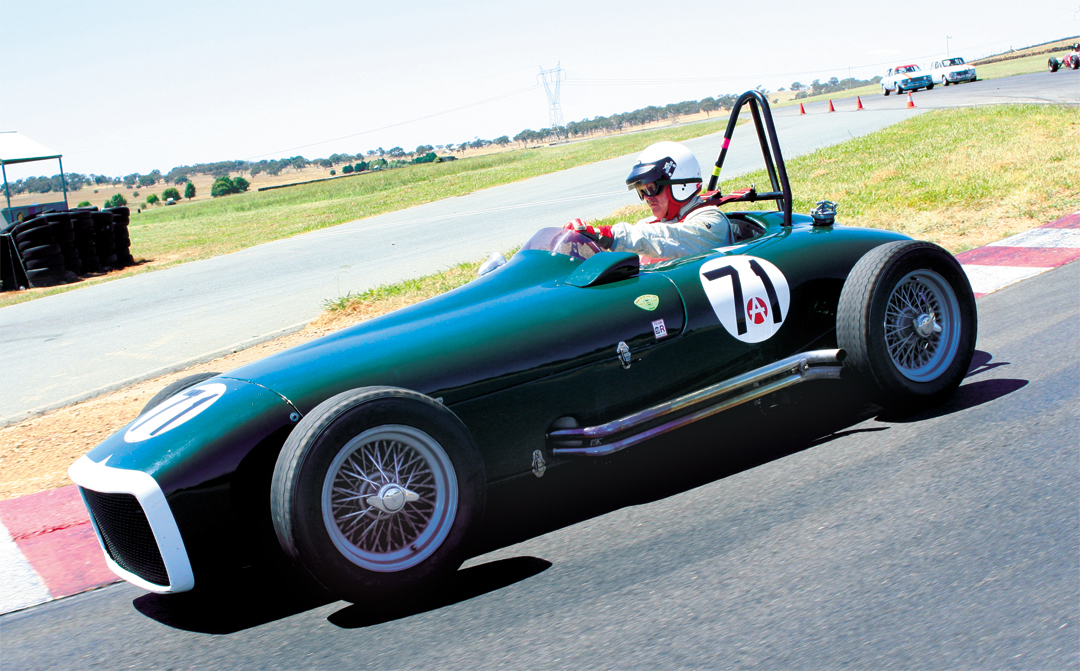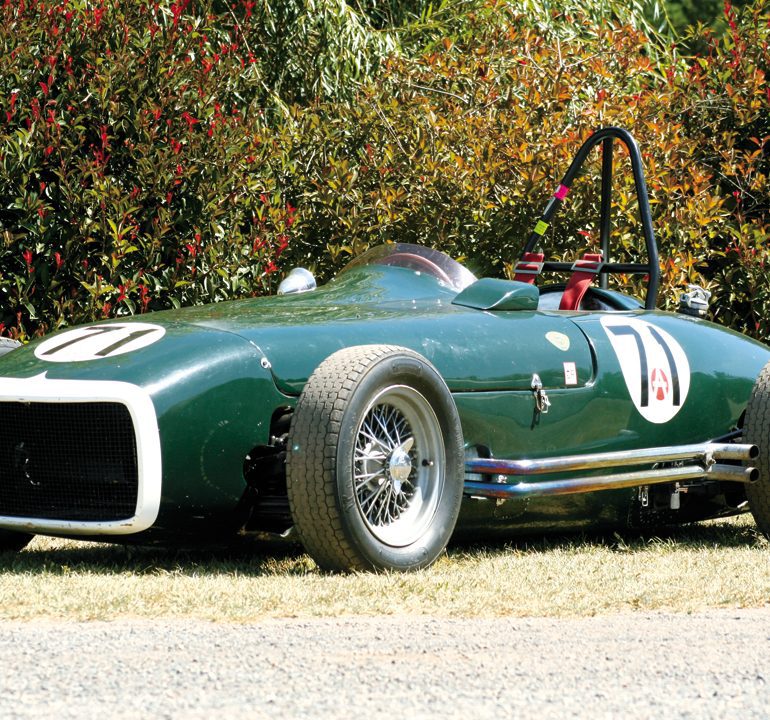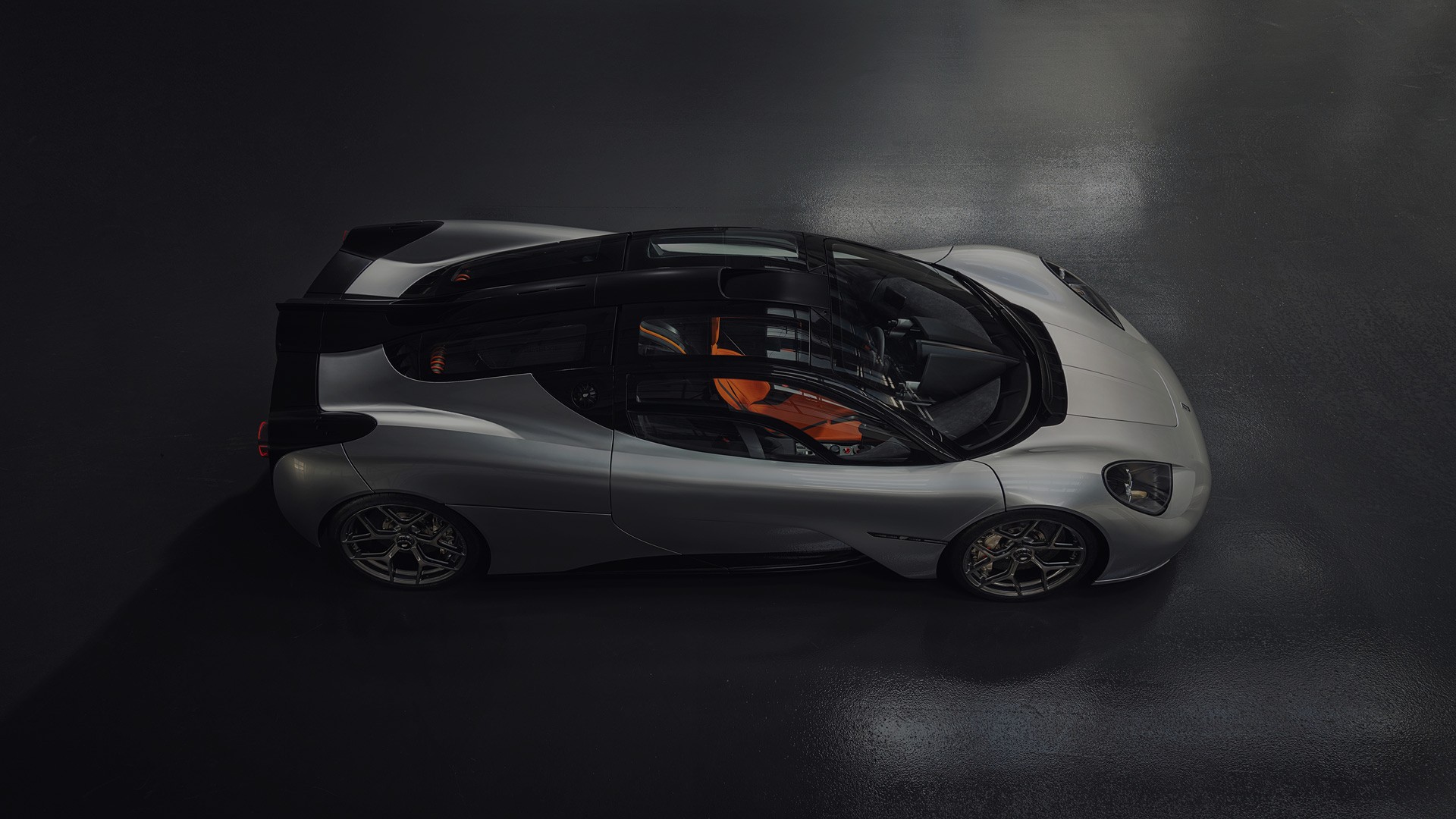1955 Crowfoot Holden Special
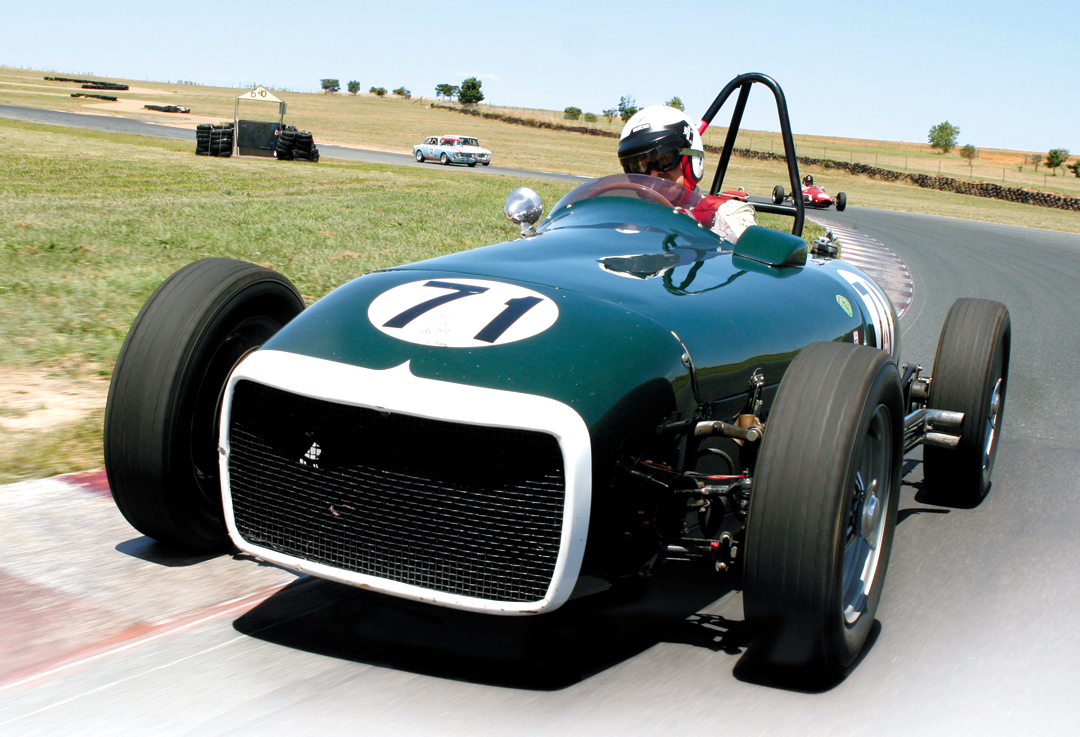
Now I understand why Australia was put where it is. When world geography was organized, it was recognized that motor racing would get everywhere, but in places where it would be hard to find a lot of cars, local ingenuity would create them. Australia is one of those places.
When VRJ made its recent maiden venture to Oz and the Phillip Island Historic meeting, it discovered several things. Between bouts of savoring the great scenery and fantastic hospitality, there was a nonstop tour of automobilia. Car and racing fanatics abound, and under the guidance of our Sydney-based editor, Patrick Quinn, we saw lots of fascinating machinery. At Phillip Island itself, 33 races in 2 days at the fast and challenging circuit south of Melbourne brought out a brilliant field of pedigreed European, a few American, and lots of Australian cars which had made it into production and a feast of specials. These included Bacchus, Welsor, Seco and Mawer Clubman cars, and a range of older “real” specials: the TS Special, Wilger Special and prewar Dodge, Ford and Chrysler Specials. There were immediate postwar MG Specials, later 1950 Sabakat, Faux Pas, Sabrina, Newbounds 500, Regah and Dees Offy Special, and many more.
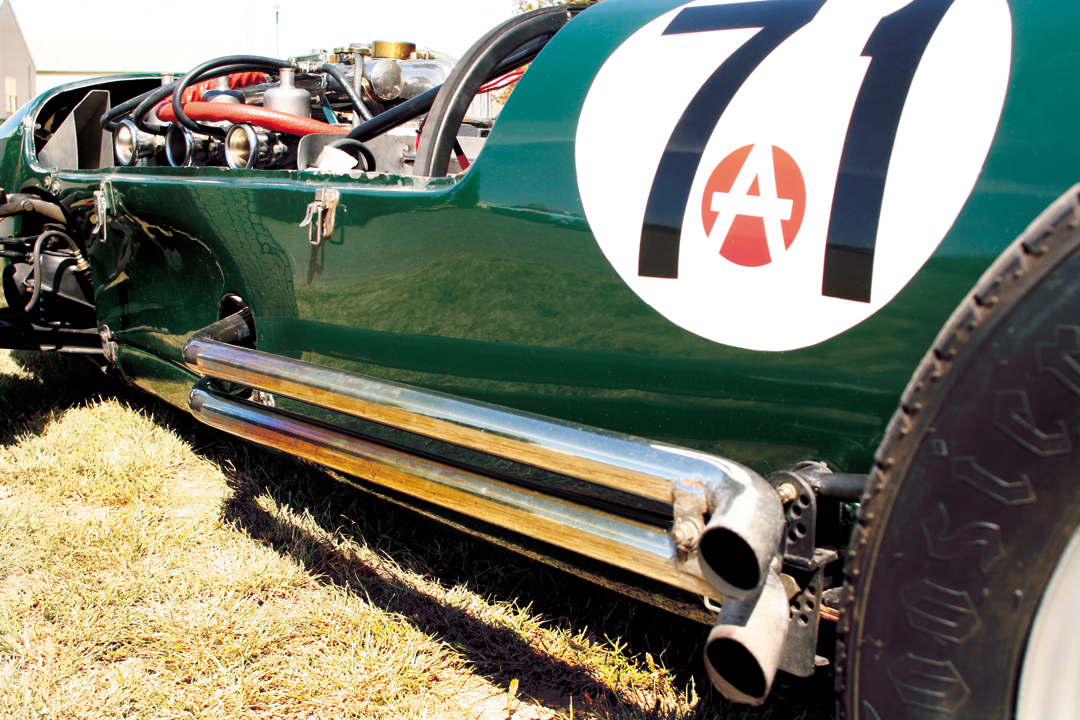
Also present with his ex-Frank Matich Elfin single-seater was successful historic racer David Reid. He invited us to venture a few hours back north on the way “home” to Sydney after the weekend to try his Elfin and another of his collection, a rather “special special”…the 1955 Crowfoot Holden. After an overnight stay at Wangaratta and a stirring drive through areas replete with kangaroos, wallabies, wombats and flocks of cockatoos, we headed to Wakefield Park, a twisty little circuit which looked like it could bring out the best and worst in an old racing car…or even a new one.
The Crowfoot Holden
One of the fascinating things about Australia for foreigners is coming face to face with the blend of influences out of which what is quintessentially “Australian” has developed. This is true in culture, sport, architecture and in motoring. For me, Australia is in many ways more American than British, though always clearly Australian. Out of the large urban areas, I was struck by how much smaller towns look like 1950s USA. In postwar motor racing, however, both the USA and Australia depended on British sports cars to get racing again. Both used MGs and Jaguars as the basis of specials, which gradually transformed, and gained “native”-built engines from Ford, Chevrolet…or Holden. VRJ featured one of perhaps the best-known American specials of all time (VRJ, June 2004) in Max Balchowsky’s Ole Yeller.
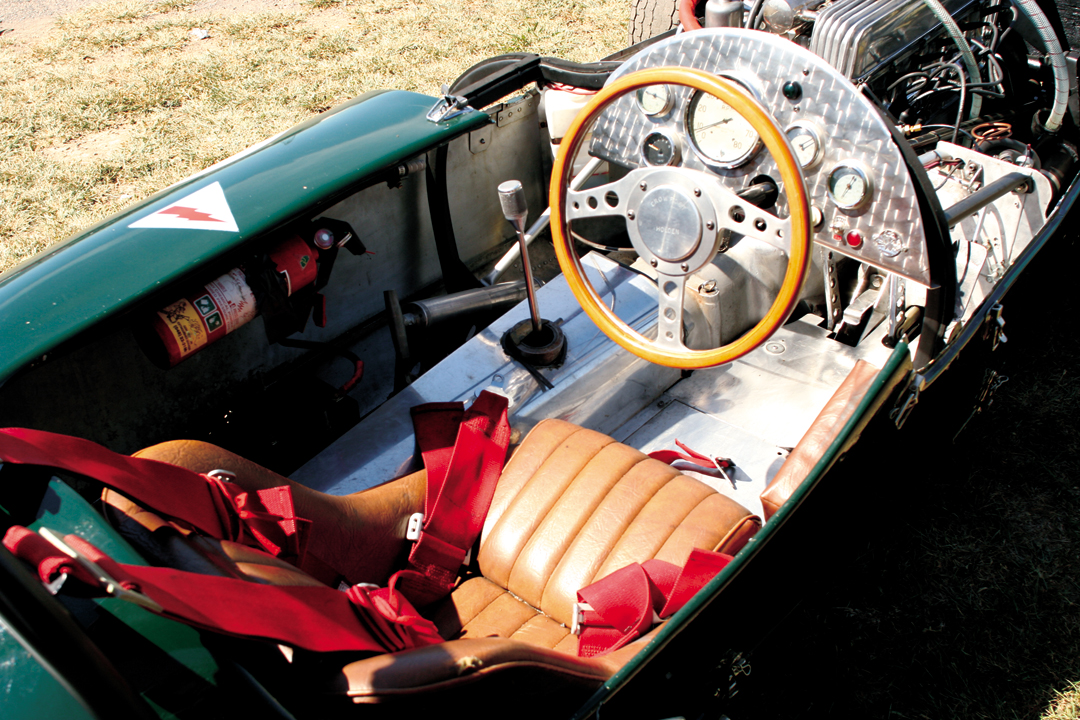
What eventually became known as the Crowfoot Holden Special started in much the same way as Ken Miles’s MG specials, R-1 and R-2. In the early 1950s, Gary Coglan had a damaged MG Y-Type, which was purchased by Frank Dynon with the notion that he would strip this car and rebuild it as a racing chassis, retaining the MG frame. Just as this process was beginning, Dynon was influenced by another special builder, Frank “Mother” Dent who with friend Arthur Rizzo, convinced Dynon to abandon the MG chassis and embark on the construction of a new one. This was agreed, and Rizzo started work on a chassis while Dent and Dynon considered what engine to use, and settled on Holden as the power unit. Some reports refer to the engine as an “old taxi motor” which turns out to be only partly true as Norm Crowfoot later confirmed that the block was indeed a Grey Holden unit which had been bored out. The Grey Holden was a six-cylinder engine, which powered saloon cars from 1948 to 1963. It started as just over 2-liters and was the last engine to use solid lifters. The name came from the simple fact that all the engines were painted…grey…at the Holden factory.
Dent and Dynon actually took the trouble to visit the Stacks Holden dealer in Sydney, which distributed engine parts and chose every part individually. They went through 200 crankshafts to pick the best they could find. While a period report says the engine was bored out to 3-1⁄8th inches, a 1997 letter from Crowfoot to the then-owner Bob Larkin describes the engine as “a Grey Holden” ex-taxi block bored to 3-1⁄4th inches and fitted with Vauxhall pistons. The crankshaft was selected by x-ray from dozens supplied from Stacks. The crank and rods were polished until they looked as though they were chrome-plated. The valves were enlarged from Holden size to Chevrolet and were fitted with dual springs. Rocker shaft mounts were made up in steel as were main bearing caps. The big end bolts were 1⁄16th-inch bigger than Holden. Carburetion was by use of three 11⁄2 inch SU carbs. The extraction system consisted of tuned lengths of pipe, and camshaft timing was 63–23–60, 20.4 inches lift and this was done by Waggott Engineering. Development of the engine by Frank Dent and Jack Myers meant it was well balanced at 8,000 rpm.
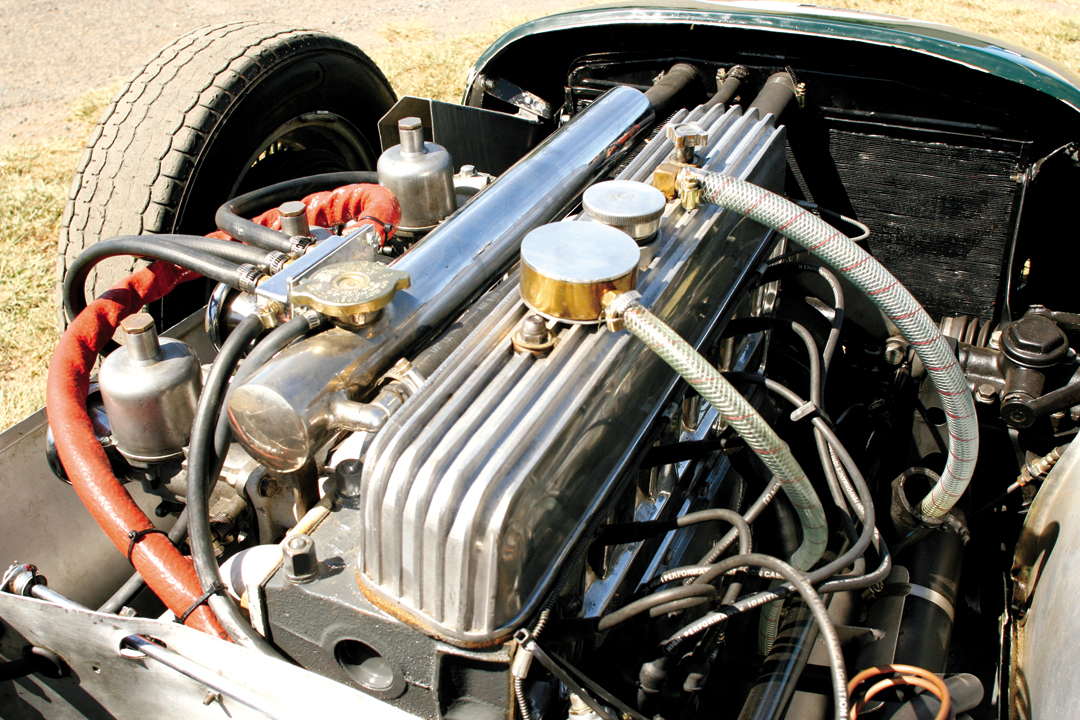
The engine was well thought out by all those involved. Dent was responsible for creation of an improved oil flow system to suit a sump whose capacity had been enlarged to nearly 2.5 gallons. This involved the fitting of an oil radiator and full-flow oil filter. The engine was originally set up to run on methanol or Avgas 115. The 26-gallon, stainless-steel fuel tank was pressurized by a standard Holden fuel pump. The original MG heritage came back into play when the power unit was mated to an MG TC gearbox, using an adaptor plate. A TC back axle would then be fitted when the chassis was completed, offset on the right side. The axle would hang on semi-elliptic springs, with an MG TD front cross member with coil and wishbone independent suspension and rack and pinion steering. There was a final drive ratio of 3.9 to 1, and the original MG Y-Type helped by supplying brake parts, with 15-inch MG wire wheels and 5.50 tires at the front and 6.00 at the rear. The brakes had steel drums with Alfin cooling vanes. Norm Crowfoot’s description, however, called these parts, “useless.” They were later replaced with a Hardies-made Humber Snipe setup.
The Rizzo-designed and built chassis was pretty simple and straightforward, with fairly-straight horizontal tubular side and cross members fabricated from chrome molybdenum 31⁄2-inches by 14-gauge tubing. The construction process took a good part of 1955, and once assembled, it was fitted with a seat and taken to the Mount Druitt circuit to run in the Holden engine and do general sorting. The handling immediately seemed to be more than satisfactory and the time and attention given to the project appeared to be paying off. All of this was done before much thought had been given to the body. Dent and Dynon went to see the reclusive Stan Barrett in Pennant Hills, New South Wales. They agreed on a two-seater style with the driver down alongside the prop shaft, based loosely on an HWM, which the creator was familiar with. The frame and body progressed, though there was something of a difference between the parties over the shape of the cowl. Dynon wanted something that resembled the then-current Mercedes W196 and that is what he got. It was beautifully done, and painted a bright red, with a fully enclosed undertray.
A Long Career
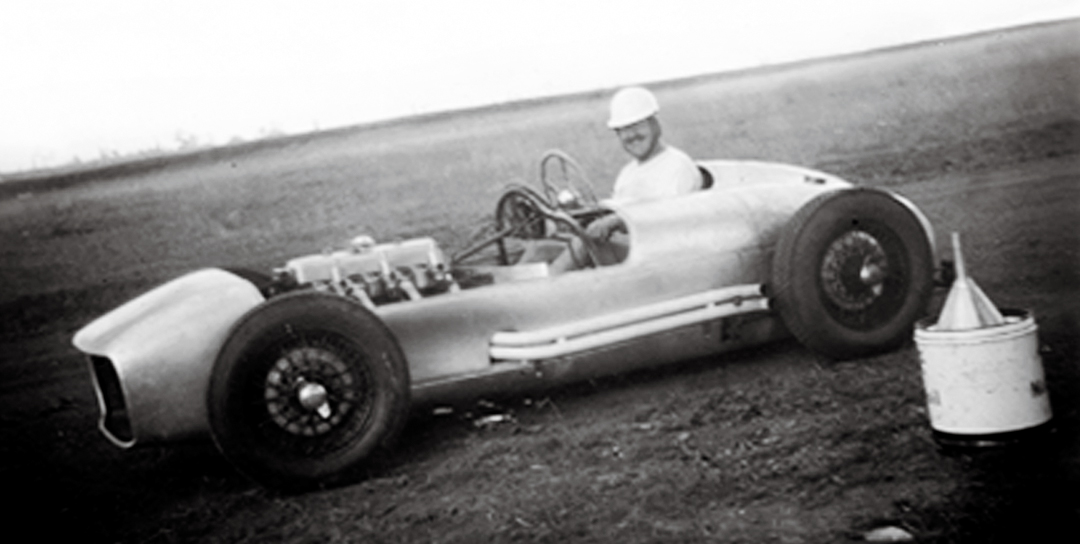
The car, first known simply as a Holden Special, went back to Mt. Druitt for a further shakedown run in either late 1955 or early 1956 where it attracted many admirers. Then it had its first real race at the fantastic Mount Panorama circuit at Bathurst, truly one of the world’s great tracks. The May 1956 issue of Australian Motor Sports said: “Frank Dynon’s Holden Special, which we saw for the first time, impressed us tremendously; it is well built and finished, a pleasant shape, goes very hard and makes a wonderful noise, less like a Holden than anything we’ve heard.” Dynon managed 3rd in a short race for Group B racing cars, but wasn’t able to run in the featured Bathurst 100. He had, however, set a top speed of 135 mph on the famed and dangerous Conrod Straight.
The speed and appearance of the car had a big impact on one Norm Crowfoot who made Frank Dynon an offer he obviously couldn’t refuse. Thus Dynon, who was an able driver, only had a few runs in the car, which he had worked hard to create. A few weeks later, on April 22, entered as the Holden-MG Special, the car made its first appearance at Mount Druitt with the new owner. There was considerable interest in whether it could compete with some of the other well-known specials, which were around at the time. The Col. James Barclay-MG led but Crowfoot was pushing him hard when James slid and balked Crowfoot who spun and dropped to 3rd. Crowfoot took 3rd in a short handicap race and 5th in another handicap event. Crowfoot then raced the car for the next two years, running regularly at Mount Druitt, Newcastle and at various venues in Queensland. At Mount Druitt particularly, the “Crowfoot Holden Special” appeared to be the best handling racer over a rough track surface. Then Druitt was resurfaced for the July ARDC Sprint meeting, and Crowfoot set the fastest time over a quarter mile sprint. The time, 15.3 seconds, was not remarkable but the new surface was very slippery and in winning the event, the car was marked as “one of the best specials we have seen for a long time.”
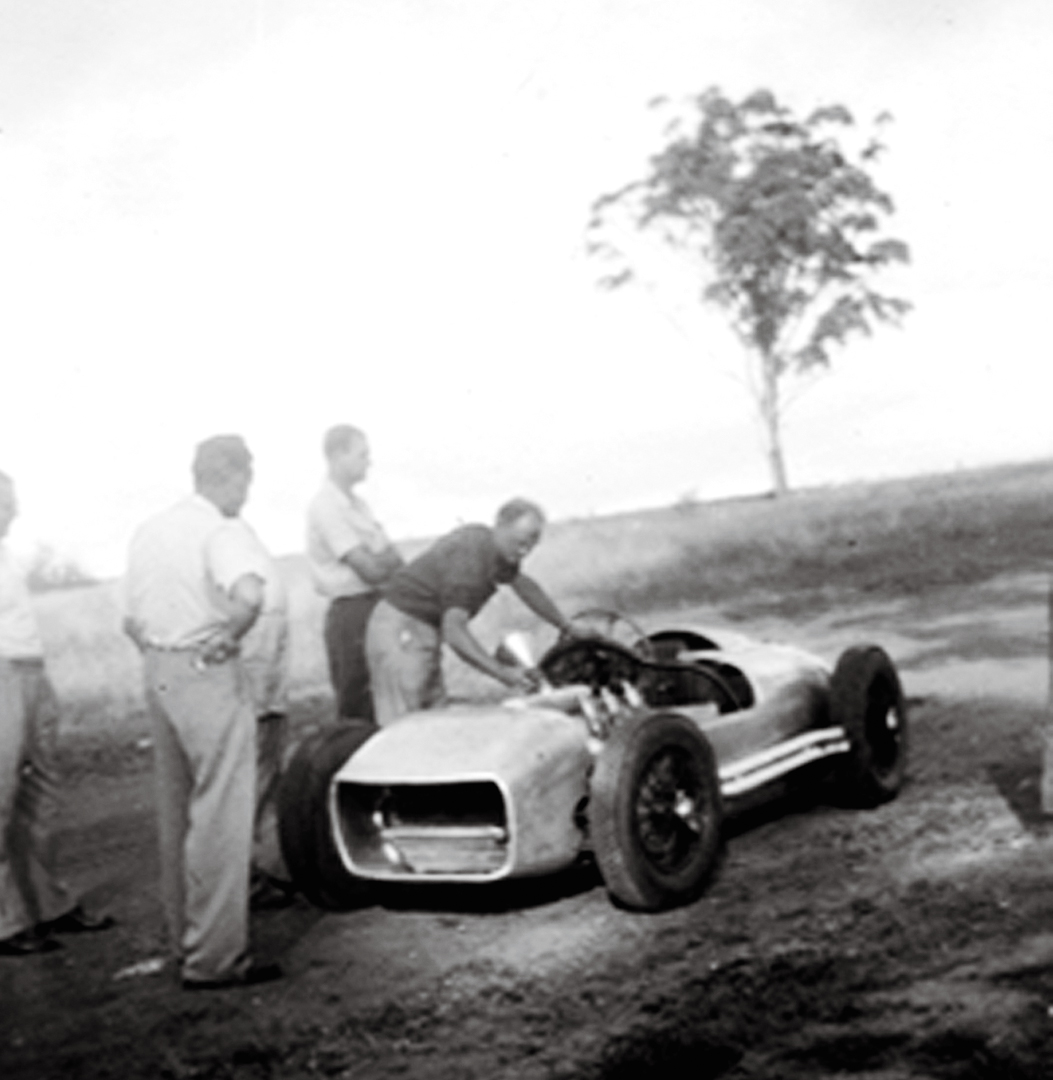
After a number of successful outings, Crowfoot sold the car to Des and Bill Kelly from Queensland late in 1957, and they raced the car over the next three years on circuits and at hillclimbs in New South Wales and Queensland. In 1960, so the tale goes, it then passed to a man whose occupation was driving a semitrailer but whose name seems to have escaped everyone’s memory. This new owner brought the Crowfoot Holden to engineer Don Fraser’s workshop in Adelaide for a number of modifications and gearbox repairs to be carried out. As sometimes happens…or happened…in the world of motor racing, the owner dropped out of sight for 12 years, and the car got shoved to the back of Fraser’s premises and was largely forgotten and neglected. After a dozen years, Fraser was about to sell the car to recoup his losses when the owner suddenly reappeared, paid up, and took the car away.
Perth dealer Jim Harwood purchased the rather sorry machine in 1972. A restoration was undertaken which took a full two years to complete and the car was raced in Western Australian events before being sold to Arnold Taylor who brought it back to the eastern states where it continued to race in the then-growing historic racing scene. At the Grafton Hillclimb in 1988 a conrod went through the block, and that was the end of Arnold Taylor’s racing with the Crowfoot Holden. Paul Samuels bought the car in 1989 from Mrs. Taylor after Arnold Taylor’s death. The car moved to Sydney and Samuels raced it at Amaroo Park. He had the ignition modernized from magneto to coil ignition, and then sold it to Bob Larkin who lived in Wamboin, New South Wales, in 1990. Larkin organized Paul Trevethan in Melbourne to do a complete restoration. The fiberglass nose, which Taylor had installed, was removed and the original refitted. Larkin was a capable driver and raced the car all over the eastern states. When it appeared at the historic race at the 1993 Australian Grand Prix in Adelaide, it even got international attention for its good handling and pace. Bob Larkin had raced an MG TC Special back in the ’50s and played a significant role in the life of the car. He restored it “from a bloody mess” and made a fine racer out of it.
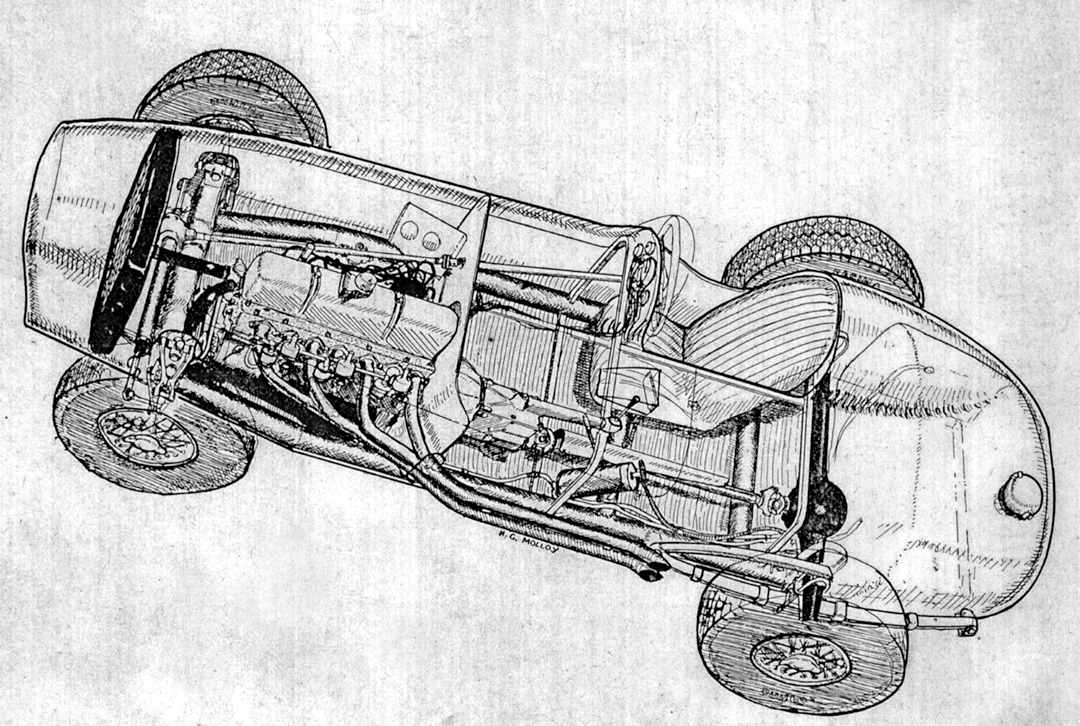
In November 1997, Larkin let David Reid race the car at Wakefield Park, and shortly afterwards Reid bought it from Larkin. Reid’s first race as the owner, which he of course still is, was at the last ever meeting at Amaroo Park in August 1998. A month later Reid won the Alec Mildren Trophy for Lb racing cars at Eastern Creek, and in November Reid was the outright winner at Wakefield Park against a Repco Holden Ausca. There were more outright wins at Oran Park, Winton and at Eastern Creek in 1999. At this last race Reid beat an ex-Lex Davidson 2.2 Cooper-Climax and was 2nd in the Alec Mildren Trophy race after a spin. The Crowfoot Holden took a 2nd and two 3rds at the 2000 Australian GP Historic event, which featured dices with Stirling Moss in an HWM.
In March 1999, Reid had put Norm Crowfoot back into his old car for the Pilotes Anciens event at Wakefield Park. After 42 years, he was overwhelmed by the reunion and vastly enthusiastic about its improvements in performance and handling. The only thing he felt was the same was the glorious sound it made. Reid had more successes at Winton, Wakefield Park, Phillip Island, Oran Park and Eastern Creek. He holds lap records at Oran Park, Wakefield Park and Eastern Creek over the last several years. The car has been superbly reliable, though in 2002 a steering arm broke at Wakefield and another restoration took place after some 12 years of continuous racing. This was done by Michael “Froggy” Vigneron. Vigneron was mechanic for Paul Samuel’s Lotus 15 and now has his own business, Highlands Race and Classic at Mittagong. The engine and gearbox went back to Paul Trevethan and the engine was converted back to run on methanol as Crowfoot did. After a ground-up rolling chassis restoration, Reid took seconds off his existing lap record at Wakefield Park!
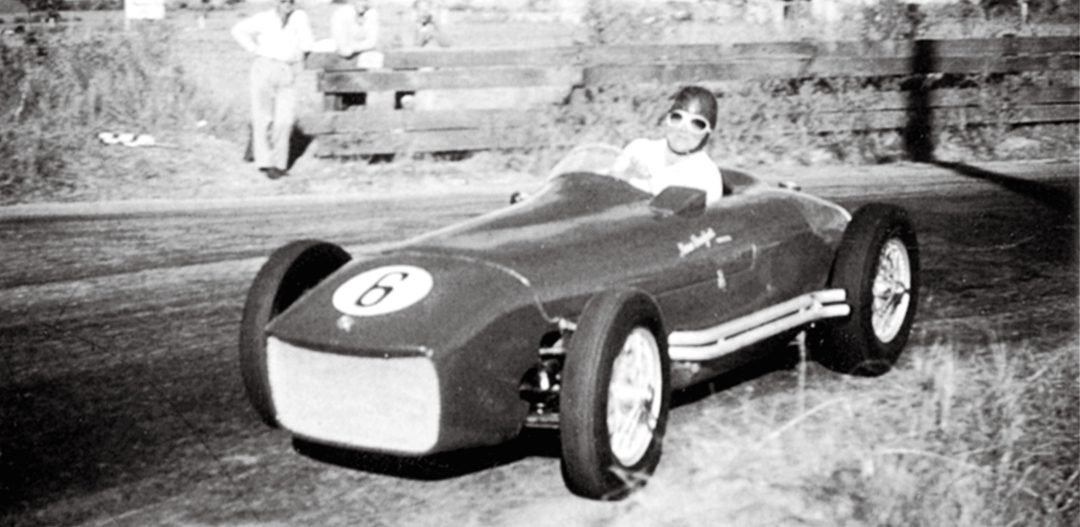
Driving “local” history
Wakefield Park is a twisty, challenging and highly enjoyable 2.2-kilometer racing circuit, which runs under a CAMS National License, located 2 hours south of Sydney near Goulburn. The TOCA two-Liter Super Touring Car Championship made its first appearance there in 2000 and declared it “the best short track circuit in Australia today.” There are no trees or natural obstacles and it’s quite a safe track, but the up-and downhill sweeps and tough corners make it a true driver’s track.
We at VRJ, as you know, get to drive some nice, important cars. I never get blasé or indifferent about what we are offered, and somehow the invitation to drive this piece of real Australian racing history brought on even more than the usual reverence. Perhaps it was down to just how friendly and generous our new Australian friends were, or David Reid’s enthusiasm in sharing something he obviously is quite proud of…and should be. This is something of a racing icon, the “down under” version of Ole Yeller and similar famous beasts.
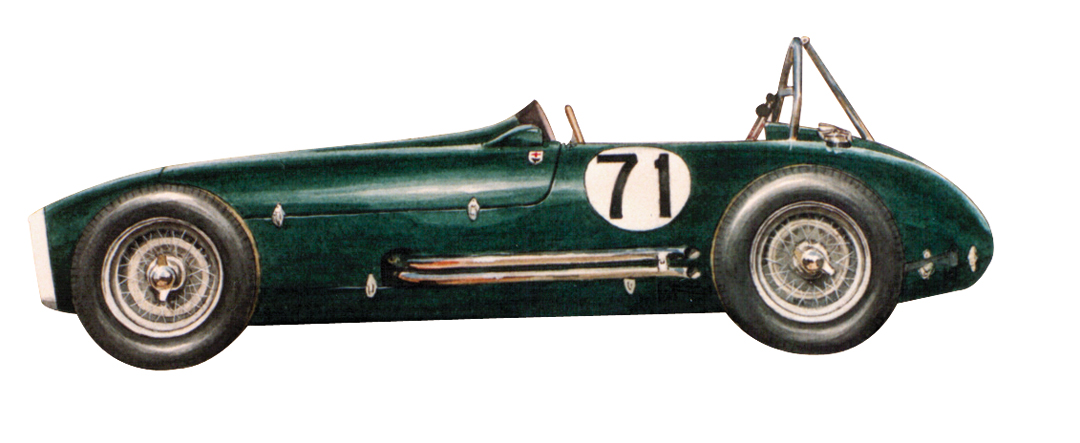
Have a look at the photos that capture the character of this car, now more than over half-a-century old. The striking shape of the Stan Barrett-built body, reminiscent of that Mercedes W196 so well liked by original owner Frank Dynon, is slightly deceptive. From the front, it’s all very compact looking, but take a careful look at the side view. That’s a long front end, and that is what struck me at first…it’s a big car, and therefore it was going to be heavy…and thus unwieldy and a real handful on this tight little circuit. Wrong on all counts! The Crowfoot Holden weighs in at 724 kilos, quite good with an engine known traditionally as being something of a heavyweight. The interior is spacious as one would expect from a machine built as a two-seater, and is dominated by a three-spoke steering wheel with a rare Crowfoot Holden badge. The simple alloy dash has an old Smith’s rev-counter reading to 8,000 rpm and an oil pressure gauge and an ignition switch and not much more. The gear-change is on the left, a standard four-speed pattern with a lockout arrangement for reverse. With many ’50s single-seaters, the reward for not paying attention to where you put your arms in the cockpit is a burn from the exhaust pipe. You get something else for that inattention in this car…a whack from the right rear tire if you lean out too far! That more than helped me to adapt a driving position slightly closer to that biggish wheel. A thoughtful person has mounted a small guard to protect the driver from that particular little danger, as well as a leather pad that helps to brace the right knee.
The seating arrangement is comfortable, though I found myself in an upright position, up in the airstream. There’s a mirror fared into the bodywork on the left, another mirror to the right of the small windscreen, and everything on the interior is easily manageable. Two things, once the old Grey Holden is cranked over, are immediately apparent…a wonderful crackling rasp snaps out of the twin exhaust setup running down the left side…and the thing goes! After a few nice acclimatization laps so our esteemed editor cum photographer could get some shots of the four cars kindly being lent to us running together, I was free to do some serious testing. That’s when the torque shows itself, at both low and higher speeds. The brakes seemed to warm quickly and maintain their stopping power throughout our numerous laps. That’s pretty important especially when learning this circuit, which is deceptive. It looks like you will be on the brakes a lot in a front-engine 50-year-old. That would be to underestimate the sticking power of this very refined racing machine. The Dunlop Racing R5s…6.00 x 15 front and rear…do help that but in fact it’s the built-in good handling that I found so impressive.
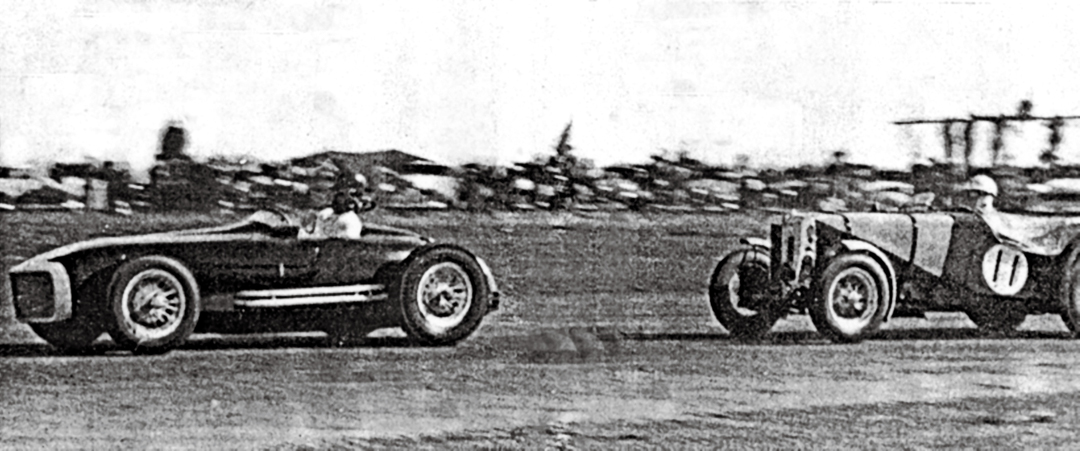
There’s a nice big chrome roll-over bar to provide good protection under duress, but the real safety feature in the car seems to be its inherent ability to take corners very quickly. Wakefield Park’s main straight allows you to get up to over the 100 mph mark before braking for something of a two-part right-hander. I was banging down the box to third for this but had the feeling that once you got more comfortable, you might manage this corner with a lift while staying in top gear, allowing the car to slide through the bend. I wasn’t altogether ready for this until the final laps and was lifting a bit too much. Then the track charges away from the pits, slightly uphill arriving at Turn 3, which is a fast left kink followed immediately by some heavy braking for 4, 5 and 6 which is essentially a connected large U. I started doing this in second, but third yielded a much smoother mastery over the whole complex series of corners. The exit at 6 is important and you have to carry speed through a flat right kink…a bit of a “hold your breath and go” corner. The next left looks and is tight, but the Crowfoot Holden wanted to rocket through here hanging the back out much quicker than I thought possible. This again was a third rather than second-gear corner…though second did get the revs up toward the top end of the revs pretty quick but third did the job just as well. That move also allowed the next tricky little right to be taken smoothly in third, keeping the revs up down the dipping short straight. The final right-hander onto the straight again looks slower than it is. It was absolutely wonderful in this car with all that torque. It braked smoothly, understeered a little toward the outside and the wall, until the back came around and the two and a half liters delivered plenty of grunt to hold the drift and fly down the straight again…and again…and again!
Buying and maintaining an Australian special
One of the reasons why specials were so popular was that they could be built from locally available parts, and they weren’t particularly expensive for that reason. However, Frank Dynon went to a lot of trouble to get the engine as competitive as possible. The results, then and now, show he was right to go the way he did. There are lots of specials racing in historic events around Australia, and some that are laid up, not racing, are waiting to be found. David Reid seems to be pretty attached to this particular one so I don’t think it’s likely to come for sale. The Holden engine is pretty sophisticated…it’s now producing some 200 bhp at 6,000 to 7,000 rpm having started at 70 bhp…and Reid’s restoration a couple of years ago and resulting improved times show that the cars need serious maintenance when raced frequently. Having said that, this car has been very reliable during its long and distinguished career. It’s hard to put a value on such an interesting car, but it must be in the region of $80,000 to $100,000 Australian.
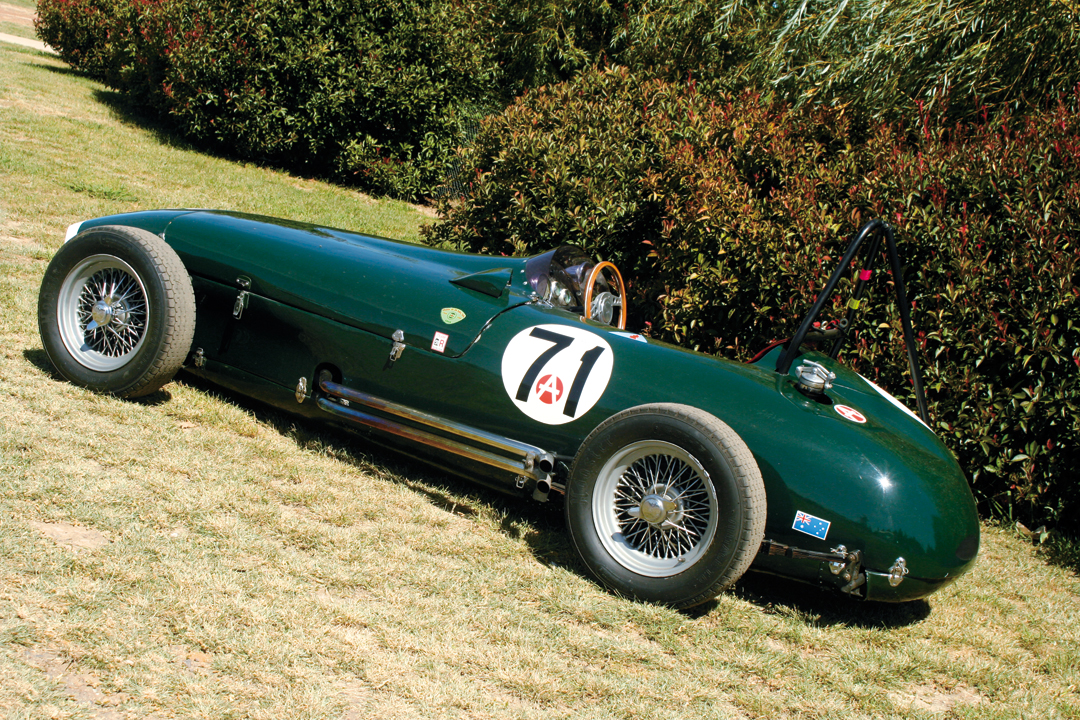
Specifications
Type: Single-seat racing car
Year of manufacture: 1955
Chassis: Chrome molybdenum steel fabricated tubular chassis
Suspension: Front: independent wishbones, coil spring, lever arm damper, antisway bar; Rear: live axle, semi-elliptic spring, telescopic damper.
Steering: MG rack and pinion
Brakes: Drums front and rear, cast iron, hydraulic. Twin caliper front, single caliper rear, girling master cylinder.
Engine: 1955 Grey Holden
Cylinders: Six in-line four stroke
Block: Cast iron
Bore and stroke: 82.55 x 76.2 mm
Capacity: 2447 cc
Power: 200 bhp @7000 rpm
Lubrication: Wet sump, gear driven oil pump in sump
Ignition: Bosch coil and distributor
Carburetion: Triple H6 SU
Transmission: MG 4-speed and reverse, now a Magnette gearbox; SPV dry-plate hydraulic clutch.
Wheels and tires: Wire spoke steel center-lock, 5 x 15 inches, Dunlop R5-6.00 x 15 front and rear
Track: Front-1,330 mm, rear-1,370 mm.
Wheelbase: 2,250 mm.
Length: 3,690 mm.
Weight: 724 kgs.
Resources
Thanks especially to David Reid, Michael Vigneron and Gary Wheeler for their unstinting help in getting this test to take place, and to the staff at Wakefield Park.
Australian Motor Sports: May and June, 1956.
Bland, J. Historic Racing Cars in Australia: Turton and Armstrong New South Wales, 2004.
